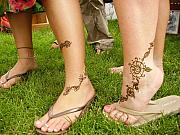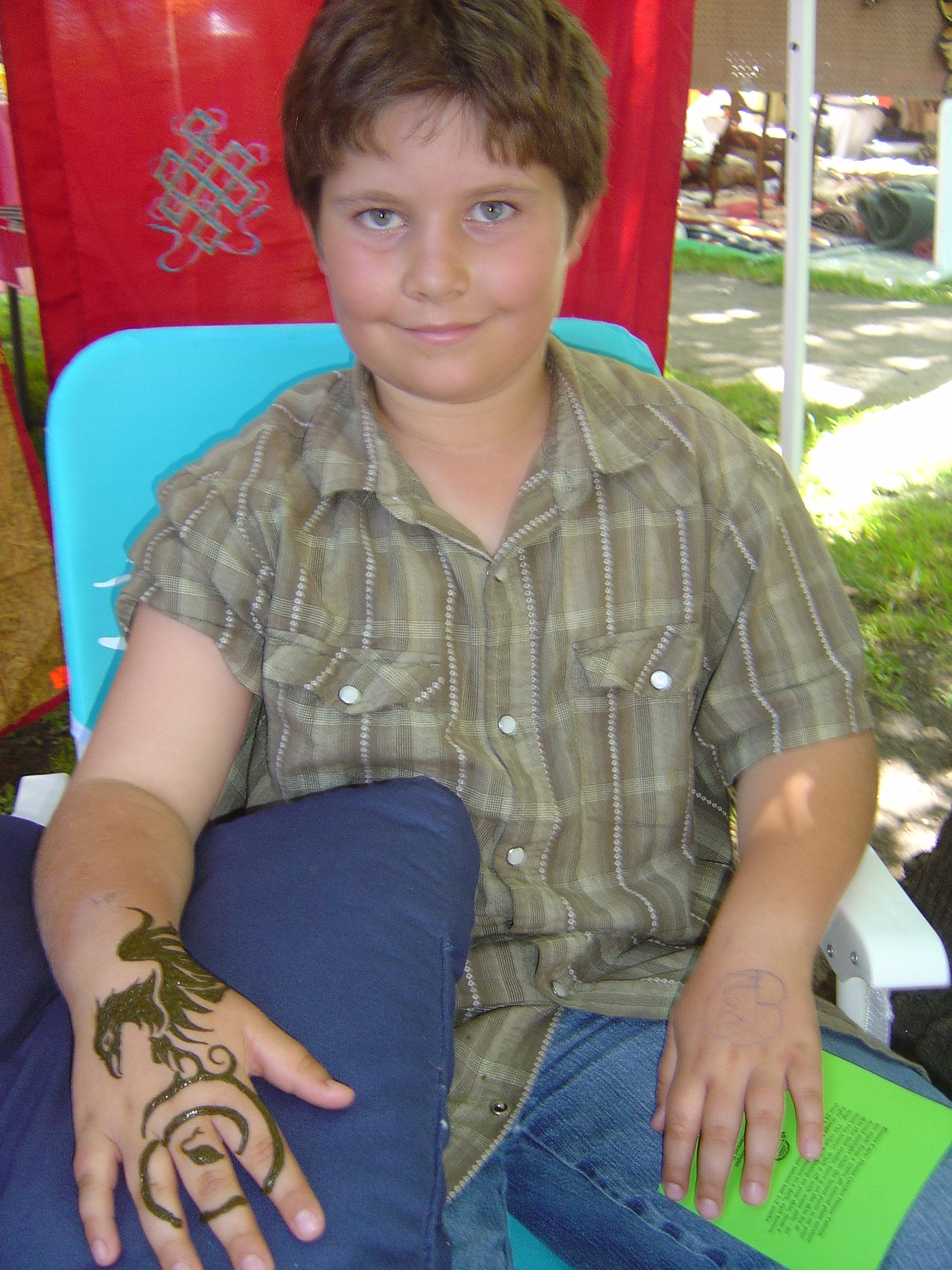Henna Mehndi (1)Biogarphy Photos Pictures Pics Images
Source(Google.com.pk)
Henna has been used as a cosmetic hair dye for 6,000 years. In Ancient Egypt, henna was known to have been used. It was commonly used for many centuries in areas of India, the Middle East, and Africa.
In Ancient Egypt, Ahmose-Henuttamehu (17th Dynasty, 1574 BCE): Henuttamehu was probably a daughter of Seqenenre Tao and Ahmose Inhapy. Smith reports that the mummy of Henuttamehu's own hair had been dyed a bright red at the sides, probably with henna.[10]
In Europe, henna was popular among women connected to the aesthetic movement and the Pre-Raphaelite artists of England in the 1800s. The fashion for Orientalism led young women with a bohemian inclination to begin tinting their hair with henna.[11] Dante Gabriel Rossetti's wife and muse, Elizabeth Siddal, had naturally bright red hair. Contrary to the cultural tradition in Britain that considered red hair unattractive, the Pre-Raphaelites fetishized red hair. Siddal was portrayed by Rossetti in many paintings that emphasized her flowing red hair.[12] The other Pre-Raphaelites, including Evelyn De Morgan and Frederick Sandys, academic classicists such as Frederic Leighton, and French painters such as Gaston Bussière and the Impressionists further popularized the association of henna-dyed hair and young bohemian women.
Opera singer Adelina Patti is sometimes credited with popularizing the use of henna in Europe in the late 1800s. Parisian courtesan Cora Pearl was often referred to as La Lune Rousse (the red moon) for dying her hair red. In her memoirs, she relates an incident when she dyed her pet dog's fur to match her own hair.[13] By the 1950s, Lucille Ball popularized "henna rinse" as her character, Lucy Ricardo, called it on the television show I Love Lucy. It gained popularity among young people in the 1960s through growing interest in Eastern cultures.[14]
Muslim men may use henna as a dye for hair and most particularly their beards. This is considered a sunnah, a commendable tradition of the Prophet Muhammad. Furthermore, a hadith (narration of the Prophet) holds that he encouraged Muslim women to dye their nails with henna to demonstrate femininity and distinguish their hands from the hands of men; thus some Muslim women in the Middle East apply henna to their finger and toenails as well as their hands.
Source(Google.com.pk)
Henna has been used as a cosmetic hair dye for 6,000 years. In Ancient Egypt, henna was known to have been used. It was commonly used for many centuries in areas of India, the Middle East, and Africa.
In Ancient Egypt, Ahmose-Henuttamehu (17th Dynasty, 1574 BCE): Henuttamehu was probably a daughter of Seqenenre Tao and Ahmose Inhapy. Smith reports that the mummy of Henuttamehu's own hair had been dyed a bright red at the sides, probably with henna.[10]
In Europe, henna was popular among women connected to the aesthetic movement and the Pre-Raphaelite artists of England in the 1800s. The fashion for Orientalism led young women with a bohemian inclination to begin tinting their hair with henna.[11] Dante Gabriel Rossetti's wife and muse, Elizabeth Siddal, had naturally bright red hair. Contrary to the cultural tradition in Britain that considered red hair unattractive, the Pre-Raphaelites fetishized red hair. Siddal was portrayed by Rossetti in many paintings that emphasized her flowing red hair.[12] The other Pre-Raphaelites, including Evelyn De Morgan and Frederick Sandys, academic classicists such as Frederic Leighton, and French painters such as Gaston Bussière and the Impressionists further popularized the association of henna-dyed hair and young bohemian women.
Opera singer Adelina Patti is sometimes credited with popularizing the use of henna in Europe in the late 1800s. Parisian courtesan Cora Pearl was often referred to as La Lune Rousse (the red moon) for dying her hair red. In her memoirs, she relates an incident when she dyed her pet dog's fur to match her own hair.[13] By the 1950s, Lucille Ball popularized "henna rinse" as her character, Lucy Ricardo, called it on the television show I Love Lucy. It gained popularity among young people in the 1960s through growing interest in Eastern cultures.[14]
Muslim men may use henna as a dye for hair and most particularly their beards. This is considered a sunnah, a commendable tradition of the Prophet Muhammad. Furthermore, a hadith (narration of the Prophet) holds that he encouraged Muslim women to dye their nails with henna to demonstrate femininity and distinguish their hands from the hands of men; thus some Muslim women in the Middle East apply henna to their finger and toenails as well as their hands.
Henna Mehndi (1)Photos Pictures Pics Images
Henna Mehndi (1)Photos Pictures Pics Images
Henna Mehndi (1)Photos Pictures Pics Images
Henna Mehndi (1)Photos Pictures Pics Images
Henna Mehndi (1)Photos Pictures Pics Images
Henna Mehndi (1)Photos Pictures Pics Images
Henna Mehndi (1)Photos Pictures Pics Images
Henna Mehndi (1)Photos Pictures Pics Images








No comments:
Post a Comment